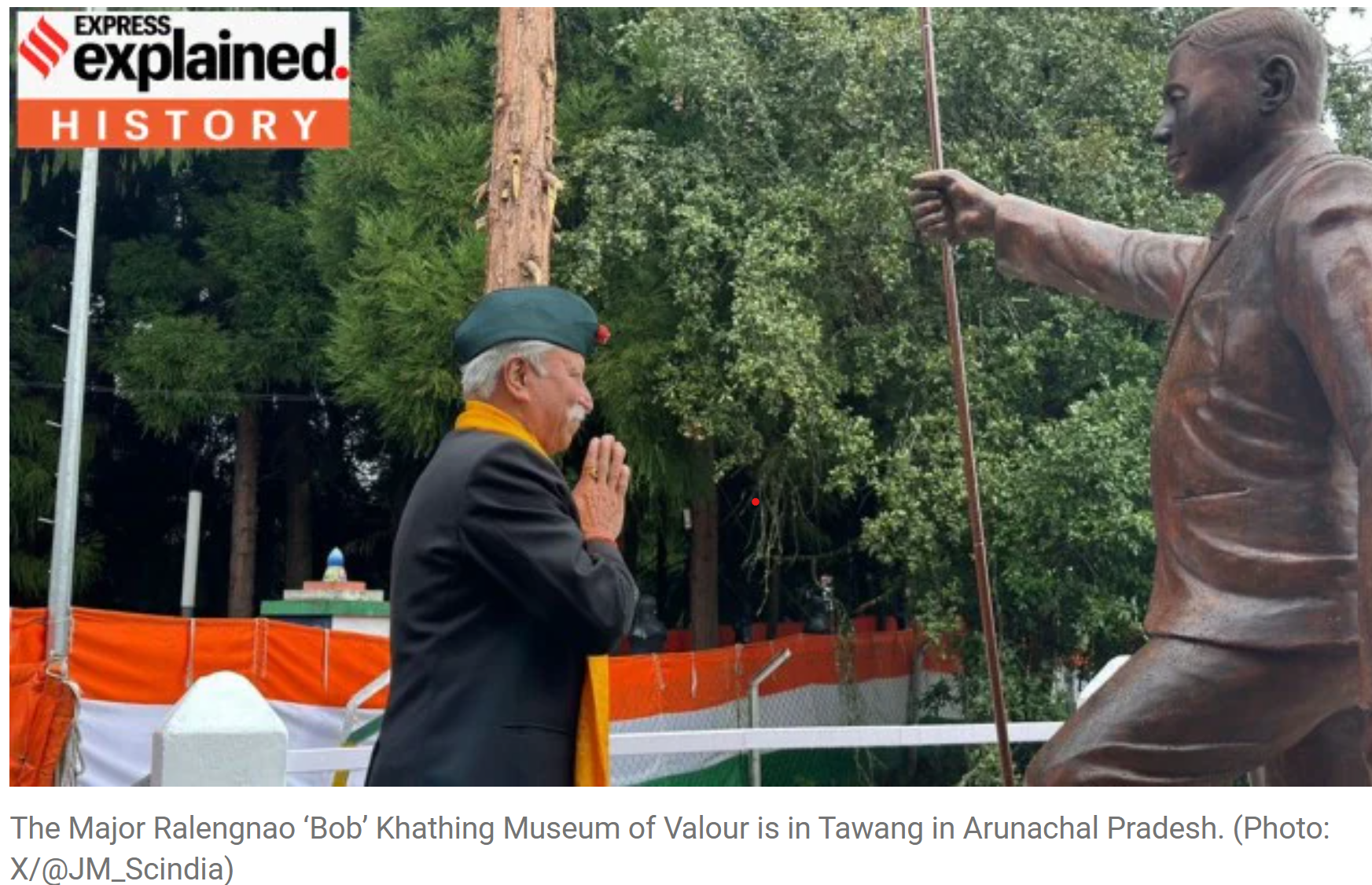Bob Khathing

- 05 Nov 2024
In News:
- Defence Minister Rajnath Singh inaugurated the Major Ralengnao 'Bob' Khathing Museum of Valour in Tawang, Arunachal Pradesh, on October 31, 2023, coinciding with National Unity Day (Sardar Vallabhbhai Patel's birth anniversary).
- Significance: The museum honours Bob Khathing's contributions to India's security and the integration of Tawang into India.
Role in the Integration of Tawang:
- Tawang Expedition (1951): In January 1951, Major Bob Khathing, an officer of the Indian Frontier Administrative Service, led the expedition to peacefully integrate Tawang into India.
- Strategic Importance: At the time, there were concerns over Chinese intentions to enter Tibet and realign boundaries. Khathing's mission was crucial to prevent Chinese advances into the area.
- Expedition Details: Khathing set off with Assam Rifles troops from Charduar, Assam, and after overcoming extreme terrain and weather, he reached Tawang. On February 14, 1951, he hoisted the Indian flag, marking Tawang's official integration into India.
- Administrative Setup: Khathing established an administrative framework, including appointing Gaon Buras (village elders) to manage local governance.
Military Service and Recognition:
- World War II Service: Bob Khathing joined the Indian Army in 1939 and earned recognition for his role in the Second World War. He was awarded the Member of the British Empire (MBE) and the Military Cross (MC) for his bravery and leadership.
- Guerrilla Warfare: Khathing was part of the Victor Force, a British-led guerrilla unit tasked with countering the Japanese in Burma and India during WWII. Later, he became the adviser to SANCOL, a force set up to track Japanese forces in the region.
- Military Cross Citation: Khathing was praised for his tireless efforts in organizing local Naga support, gathering intelligence, and participating in successful ambushes, which played a critical role in defeating the Japanese.
Post-War Career and Civil Service:
- Ministerial Role in Manipur: After WWII, Khathing was demobilized and joined the interim government of Manipur, where he served as a minister in charge of the hill areas.
- Integration of Manipur: Following Manipur's merger with India in 1949, Khathing joined the Assam Rifles and served for two years before moving into civil administration.
- Key Positions: He served as Deputy Commissioner of Mokokchung (Nagaland), Development Commissioner in Sikkim, and Chief Secretary of Nagaland.
- Ambassadorship: In 1975, Khathing became India's ambassador to Burma, possibly the first person of tribal origin to hold such a position in independent India.
The Importance of His Contributions:
- Integration of Border Areas: Khathing’s role in integrating Tawang and securing India's northeastern frontier was pivotal in preventing further territorial disputes, especially with China.
- Institutional Development: He helped establish military and security institutions, including the Sashastra Seema Bal, Nagaland Armed Police, and the Naga Regiment, which played important roles in maintaining peace and security in the region.
- Heroic Leadership: Khathing's leadership, both as a soldier and civil servant, continues to be celebrated, symbolized by the Major Bob Khathing Museum of Valour.
